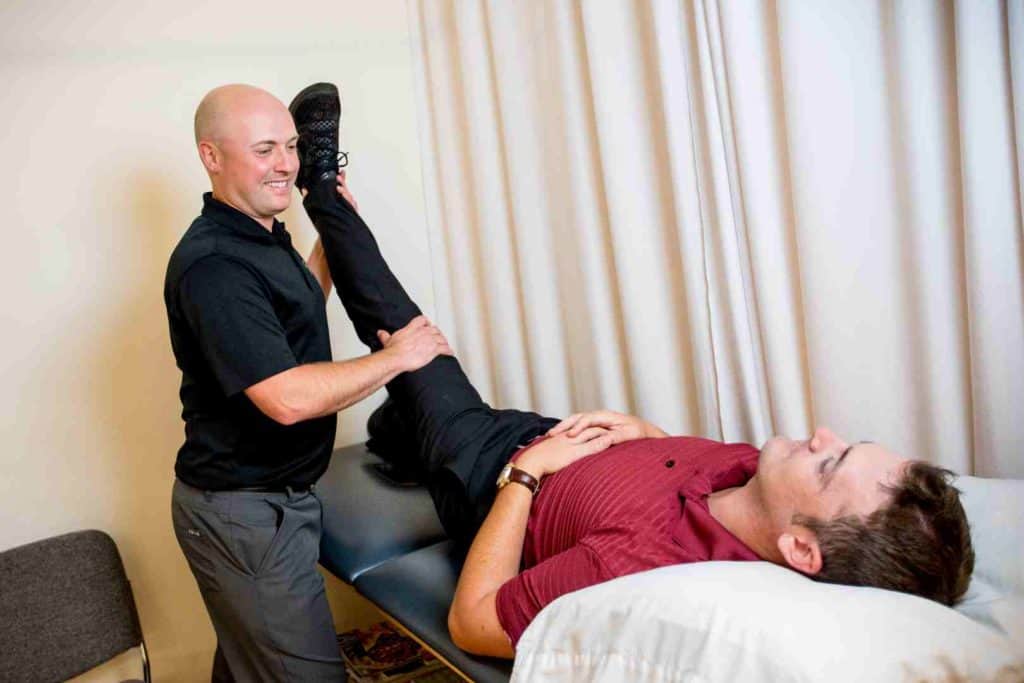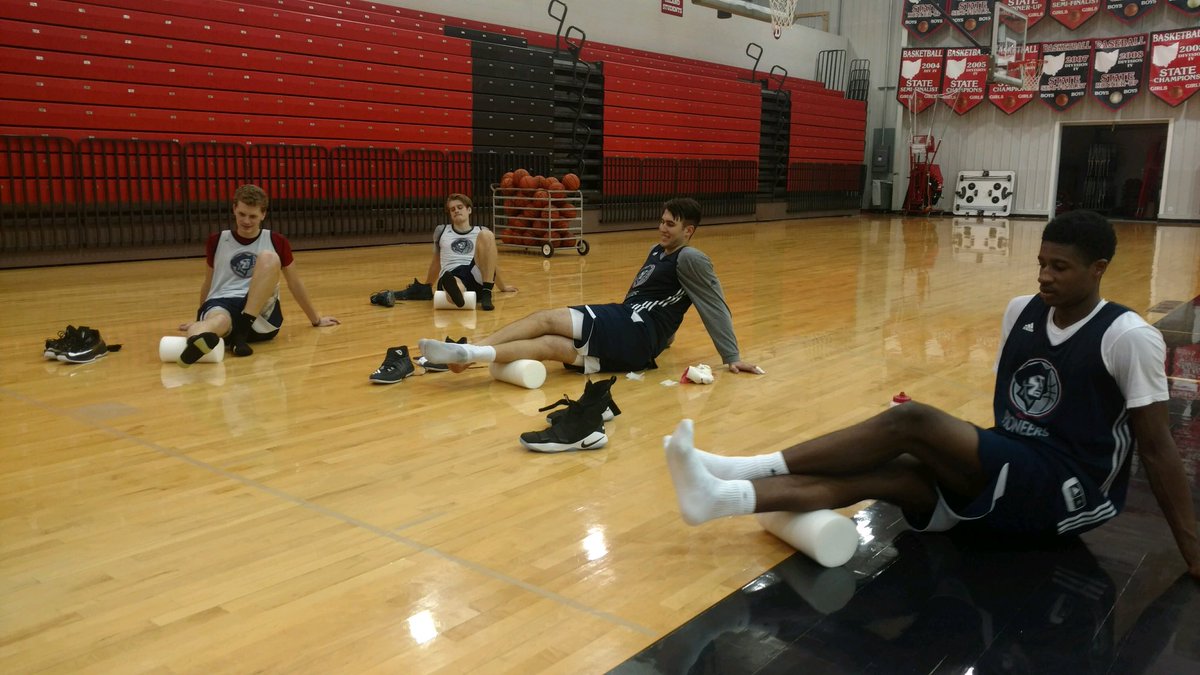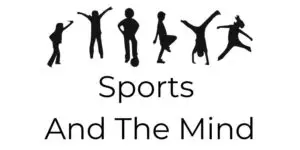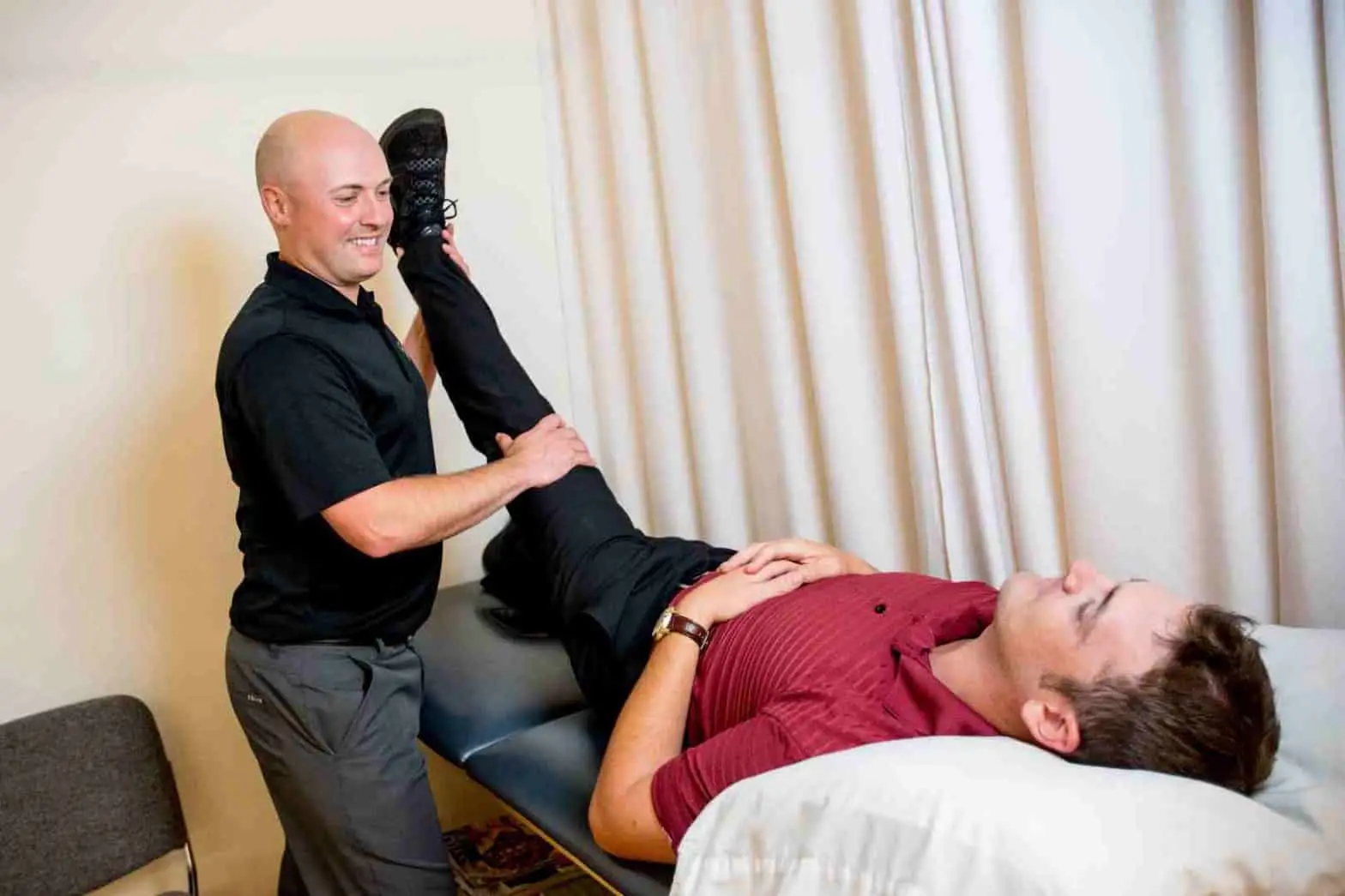Table of Contents
*This post may contain affiliate links. As an Amazon Associate we earn from qualifying purchases.

Why Do Manual Therapies Help Athletes?
What do Arnold Schwarzenegger, Michael Jordan, Jordan Spieth, Aaron Rodgers and Vernon Davis all have in common? They view chiropractic treatment as a vital part of their health and performance plan.
Athletes describe how sports are often asymmetrical or one side dominant and involve very repetitive motions. For example, think of a golfer who engages day after day with the same swing pattern, or, a tennis player always using her left hand for shots. These examples show how athletes often engage in repetitive motions resulting in potential injuries and inefficient movement patterns. There are three key areas that chiropractic and other manual therapies focus on that help athletes gain a competitive edge. These include:
- Improving body movement
- Supporting quicker recovery time and healing from injuries
- Gaining an understanding of the mind-body connection
Improving Body Movement

As an athlete, it can be helpful to view the body like a car, and similar to a car, bodies need a certain level of maintenance. With cars, we service things like oil, spark plugs, do wheel rotations and balancing in order to keep the car working well. If we did not do some type of car service or treatment on a regular basis it would not run efficiently. Our bodies work the same way as a car, but the care plan is different.
The point being in order for a car to run well you need to maintain it. The same point can be said for bodies. Manual therapies provide care to help athletes maintain proper alignment and movement patterns.
Specifically, chiropractic care provides a means to bring the structure or bones back into balance, which allows the soft tissues to work more efficiently. The more efficient athletes can be, the greater the advantage they will have in a competition. For example, Tom, a golfer, sought treatment with me for low back pain. As a chiropractor, I evaluated his spine and muscles for imbalances and found he was compensating. The result of this compensation is inefficiency in muscles. Athletes at all levels utilize chiropractic and other manual therapies, such as physical therapy, massage therapy, acupuncture and cupping to gain a competitive edge by striving to create balance and efficient body movements.
Dan O’Brien, the Olympic gold medalist in the decathlon says:
“Chiropractic is essential for running. If I could put a percentage value on it, I would say I compete for 8-10% better with regular chiropractic.”
The Importance of Recovery

Manual therapies not only are a means of preventing injury, but they can also be part of the recovery from both ongoing demanding training cycles and from injury, should this occur. Recovery is one of the most important, yet often neglected, aspects of the sport. Recovery means different things to different athletes. Some need rest. Some need rest with manual therapies to restore their bodies. Some need rest, manual therapies and work with a sports psychologist.
How Do Manual Therapies Help with Recovery?
Manual therapies provide an incredible means to assist with recovery by providing three key components. First, bodywork is associated with increased blood flow to the soft tissues. Second, manual therapies can improve lymph drainage. Finally, a manual therapy like chiropractic assists with spinal alignment. For those who are injured, there might be some very specific manual treatments needs as part of their rehabilitation plan. So, generally speaking, many athletes are supported by a team of manual therapists who each address the body in a slightly different manner. As a chiropractor, I regularly help athletes create these types of teams, which can consist of, in addition to myself, massage therapists, acupuncture professionals, and physical therapists. I will also make referrals to sports psychologists if I believe emotional or mental health issues need to be addressed. It is not unusual to recommend some type of mind-body treatment. Every athlete has unique needs so each care team might be different. It is important to explore what is most beneficial for each individual. I believe that athletes who embrace the creation of a care team set themselves up for greater success in sport and in well-being.
Mind-Body Connection
“Attitude is little thing that makes a big difference”
-Winston Churchill
Pain and injury and other medical issues can arise with competitive sport and manual treatments can help with recovery. But it is so important to remember that how one approaches recovery from an emotional or mental point of view can impact their overall well being. Research consistently shows that a positive attitude is associated with a greater adherence to rehab treatments.
 Manual therapies can help athletes make the connection that their body and brains work together. For example, work by Professor Amy Cuddy has shown that the position of the body(arms raised about the head) is associated with changes in the chemistry of the body. In my 20 years of practice as a chiropractor, the most rewarding moments have been when an athlete recognizes that their performance will be better when they align their thoughts with their body. This can include learning how to positively coach oneself through recovery.
Manual therapies can help athletes make the connection that their body and brains work together. For example, work by Professor Amy Cuddy has shown that the position of the body(arms raised about the head) is associated with changes in the chemistry of the body. In my 20 years of practice as a chiropractor, the most rewarding moments have been when an athlete recognizes that their performance will be better when they align their thoughts with their body. This can include learning how to positively coach oneself through recovery.
Manual therapies provide a door way into the body-mind connection by providing touch and body awareness. This can be as simple as recognizing when tension is building and knowing how to relieve this with certain exercises. Or it can be more profound with athletes understanding the mind-body connection, for example, of tension, and knowing how to make mental and physical changes to relieve the tension and perform at their best. Athletes who combine manual therapy with sport psychology often see incredible results.

